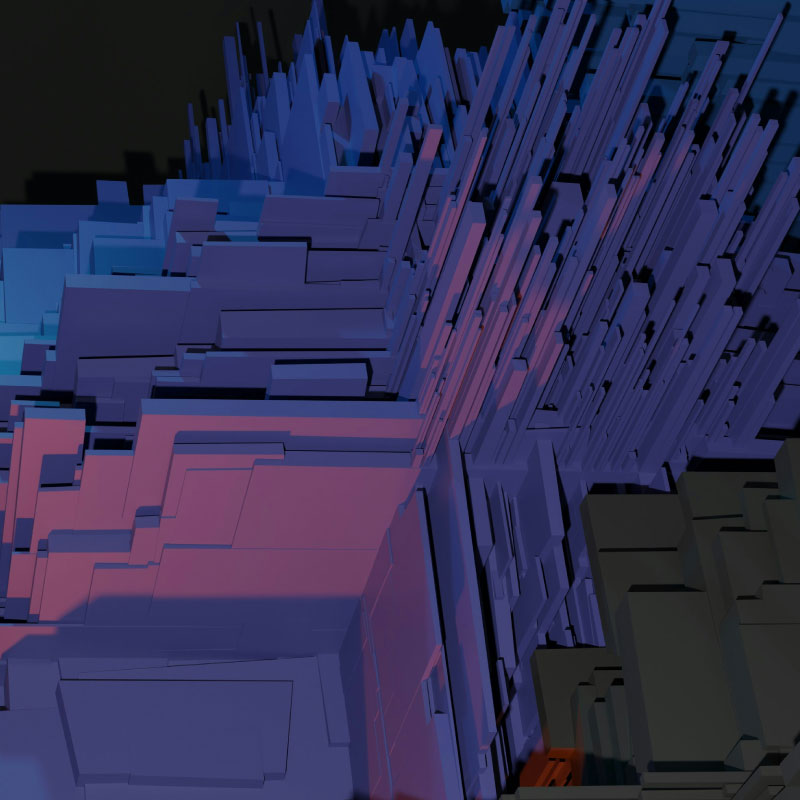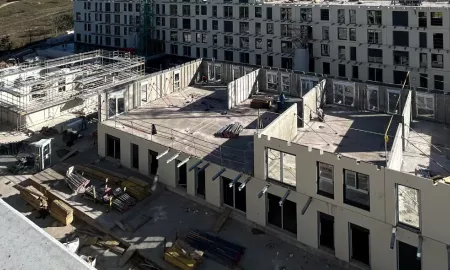Our experts collaborate with their technical knowledge in this article on Artificial Intelligence to shorten processes.

Within the framework of the 6th International Conference on Advanced Research Methods and Analytics (CARMA 2024), held in Valencia from 26 to 28 June 2024, a multidisciplinary team of researchers presented an innovative study on the quantification of intangible values using Artificial Intelligence (AI).
This work, led by Salvador Domínguez Gil, Andrea San José Cabrero and Antonio Sánchez Gea, together with other experts from institutions such as the Polytechnic University of Madrid, the University of Navarra and SOCOTEC, addresses one of the most significant challenges in asset valuation: the measurement and valuation of intangible elements in the context of the real estate market and sustainable urban development.

BACKGROUND
The Challenge of Intangible Values in the Digital Age

The quantification of intangible values in contemporary society represents a formidable challenge for the social and economic sciences. These values, which encompass aspects such as culture, identity, social well-being and community cohesion, play a fundamental role in the sustainable development of societies. However, their intangible nature and the inherent complexity of measuring them present significant methodological and conceptual obstacles.
Traditionally, the measurement of progress and development in cities has focused on tangible and quantitative indicators, such as Gross Domestic Product (GDP). However, these indicators do not capture the full spectrum of individuals' well-being and quality of life. In the area of urban development and construction, there has been a shift from short-term economic perspectives to life-cycle asset management approaches, driven largely by the emergence of sustainable financing mechanisms based on new sustainability indicators and life-cycle approaches.
The quantification of intangible values in contemporary society represents a formidable challenge for the social and economic sciences. These values, which encompass aspects such as culture, identity, social well-being and community cohesion, play a fundamental role in the sustainable development of societies. However, their intangible nature and the inherent complexity of measuring them present significant methodological and conceptual obstacles.
Traditionally, the measurement of progress and development in cities has focused on tangible and quantitative indicators, such as Gross Domestic Product (GDP). However, these indicators do not capture the full spectrum of individuals' well-being and quality of life. In the area of urban development and construction, there has been a shift from short-term economic perspectives to life-cycle asset management approaches, driven largely by the emergence of sustainable financing mechanisms based on new sustainability indicators and life-cycle approaches.
Limitations of AI in the Valuation of Intangibles
The management and quality of data sources for the quantification of intangible values face significant challenges, even for the most advanced neural network models. The diversity and subjectivity inherent in these values make it difficult to standardize data collection and analysis methods. In addition, the lack of comprehensive and reliable databases hampers the ability to make robust temporal and spatial comparisons.
A crucial obstacle to the effective implementation of AI in real estate is the scarcity of data. Artificial Intelligence models require large data sets to be trained and generate accurate predictions, which will depend on the type of applied intelligence and the model selected. However, in the case of unique real estate assets or in less developed markets, the availability of historical and current data may be limited. This scarcity of data can lead to AI models that are not adequately informed, resulting in less reliable predictions and evaluations.

LIFE CYCLE
AI for the evaluation of the life cycle of an asset

In the field of Life Cycle Cost Assessment in buildings, there are "elementary" concepts that can be measured and identified in databases, such as the costs of construction, operation, maintenance and demolition of buildings. On the other hand, integral costs or Full Living Costs include these, as well as externalities, indirect costs, intangible costs, economic benefits, rents or incomes, and environmental or social costs.
Although some studies analyse and develop several of the phases linked to both concepts, many of these aspects are difficult to assess due to a lack of data or methodologies. In fact, there are no empirical studies in the last ten years that validate, with verifiable data, all or part of its theoretical determinations. This may be due to the sensitive nature of information flows from supply markets, from agents in the construction and real estate sectors, as well as from uncertainty regarding the evolution of future costs and revenues linked to the development of markets and society itself (Enshassi et al., 2014).
In the field of Life Cycle Cost Assessment in buildings, there are "elementary" concepts that can be measured and identified in databases, such as the costs of construction, operation, maintenance and demolition of buildings. On the other hand, integral costs or Full Living Costs include these, as well as externalities, indirect costs, intangible costs, economic benefits, rents or incomes, and environmental or social costs.
Although some studies analyse and develop several of the phases linked to both concepts, many of these aspects are difficult to assess due to a lack of data or methodologies. In fact, there are no empirical studies in the last ten years that validate, with verifiable data, all or part of its theoretical determinations. This may be due to the sensitive nature of information flows from supply markets, from agents in the construction and real estate sectors, as well as from uncertainty regarding the evolution of future costs and revenues linked to the development of markets and society itself (Enshassi et al., 2014).
The quantification of intangible values in society presents a set of methodological, technical and conceptual challenges that require an interdisciplinary and collaborative approach, which goes beyond the scientific-mathematical framework. Overcoming these difficulties will not only allow for a better understanding of social development and its dynamics, but will also facilitate the formulation of more effective public policies, aligned with the well-being and aspirations of the community in terms of sustainable development.
In this effort, methodological innovation, improved data management and the promotion of a culture of continuous evaluation will be key elements to move towards a more inclusive, resilient and sustainable society.
To learn more about this topic, we invite you to download the full article at the following link in the article Towards Intangible Value Quantification
You want to know more about our Sustainability services
Bibliography:
- Bahramian, M. & Yetilmezsoy, K. (2020). Life cycle assessment of the building industry: An overview of two decades of research (1995–2018). Energy and Buildings, 219, 109917. https://doi.org/10.1016/j.enbuild.2020.109917
- Enshassi, A., Kochendoerfer, B. & Rizq, E. (2014). Assessment of the environmental impacts of construction projects. Journal of Construction Engineering, 29(3), 234-254. https://dx.doi.org/10.4067/S0718-50732014000300002
- ISO. (2017). ISO/DIS 15686-5:2017, Building and constructed assets — Service life planning — Part 5: Life Cycle Costing.
- Orhangazi, Ö. (2019). The role of intangible assets in explaining the investment–profit puzzle. In Cambridge Journal of Economics (Vol. 43, Issue 5). https://doi.org/10.1093/cje/bey046
- Schneider-Marin, P. & Lang, W. (2020). Environmental costs of buildings: monetary valuation of ecological indicators for the building industry. International Journal of Life Cycle Assessment, 25(9), 1637–1659. https://doi.org/10.1007/s11367-020-01784-y

You might also be interested...





Add new comment